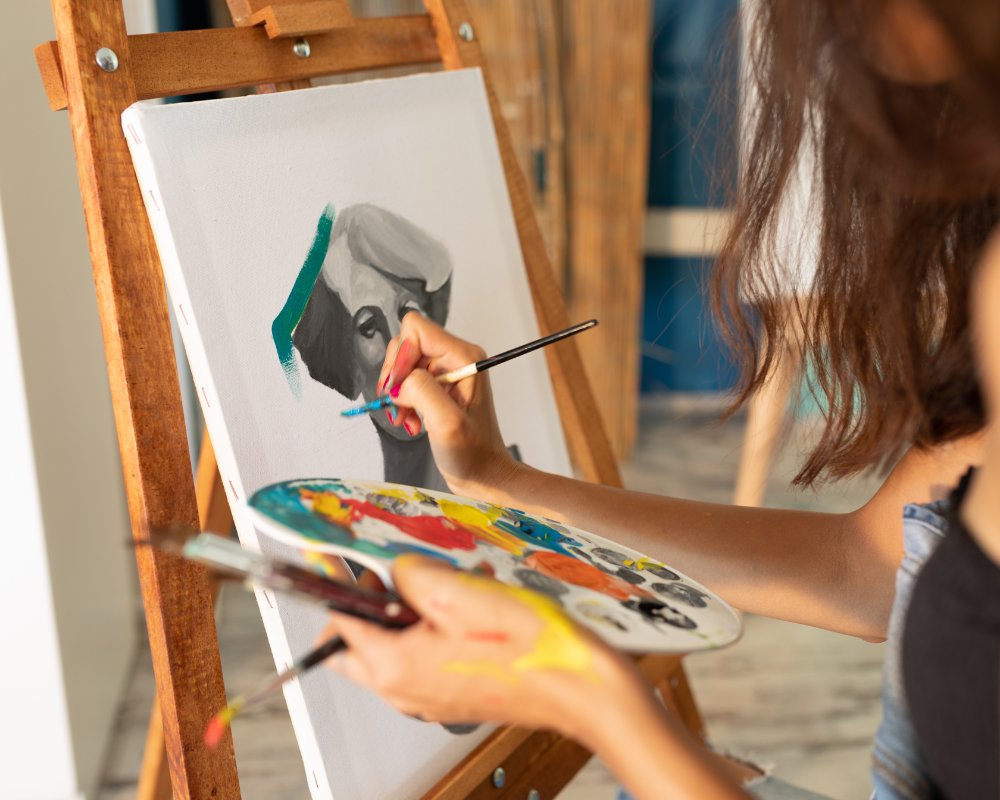How to Create a Strong Art Portfolio for the Best US & UK Design Schools
Creating a strong art portfolio is probably the most important step in getting accepted into the best art and design schools in the US and the UK. A strong portfolio is your chance to demonstrate your talent, creativity, and individual vision while providing admissions committees with a glimpse into your creative process.
If you are sending your applications to US or UK art and design institutions, here is how you can create a stellar portfolio.

1.Know Each School’s Requirements
Begin by examining the requirements for admission to those schools you are considering. Take particular note of what is required regarding the type of artwork, quantity of artworks, and types of formats (i.e., electronic or paper) as well as their submission deadlines.
2.Prioritize Your List
Start by making a clear list of the colleges you plan to apply to, organized by priority. Once your list is defined, focus your creative energy on producing artworks that align with the portfolio standards and expectations of your top-choice and target schools. This strategic approach ensures that your work is designed to impress admissions committees at the colleges you’re most excited about, while also keeping you prepared for a variety of opportunities.
3.Include a Variety of Work
One of the best art portfolio tips is that it should highlight a broad range of skills and medium explorations. Include pieces that showcase your proficiency in different media across 2D, 3D, and Digital formats- such as, whether its pencil sketches, paintings, photography, illustrations, sculptures, and mixed media works.
4.Ensure Balance
Your portfolio should display a mix of technical skills and creative thinking abilities. Showcase skills such as live drawings, timed studies, figure drawings, to show strong technique, as well as creative compositions and experimental works to portray your ability to think outside the box. Colleges want to see that you are willing to take risks and aren’t afraid of failure.
5.Quality Over Quantity
Instead of blanketing your portfolio development with every bit of work, take careful consideration and include only your best material. Every item has to present your ability and creativity at their finest.
6.Show Don’t Tell
Displaying works that provide insight into your creative process, like sketches, mind maps, and moodboards, can be particularly effective. This provides admissions with a window into your method for solving problems, working out ideas, and creating concepts.
7.Highlight Your Artistic Voice
If you’re interested in abstract ideas, social issues, nature, or personal experience, ensure that your work reflects your individuality. The more personal and genuine your work, the more likely you’ll be remembered by the admissions committee. Remember, the portfolio is a chance for them to understand who you are as an individual.
8.Provide a Professional Presentation
Don’t use low-resolution or dark photos. Ensure you are using a DSLR camera to take high-quality photos of your work against a clean background. Use an appropriate light source and crop off your images as required. Make sure the formatting is consistent.
9.Seek Feedback and be open to Critique
Seek teacher, mentor, or peer feedback before submitting your portfolio. Take advantage of colleges’ portfolio review days. Helpful comments can show you where your portfolio can improve and present your work more clearly. Go ahead and revise your portfolio several times. Each round gives you the chance to strengthen your work and represent your journey artistically more clearly.
Conclusion
By using these down-to-earth tips, knowing college requirements, presenting a variety of work, emphasizing quality, and articulating your unique artistic voice, you can make a portfolio that accurately represents your potential as an artist.
If you need additional assistance or want to master the art of creating a portfolio,you can contact Artiste 360-The Art School. Our intensive portfolio development program, led by highly trained artists and designers, provides you with personalised guidance and exposure to over 20 art and design mediums to ensure your portfolio stands out and increases your chances of success with art school admissions.
